Capturing on Kodak 16mm film, DP Pat Scola, ASC created a warm, timeless look for director Alex Russell's celebrity-obsessed 'Lurker'
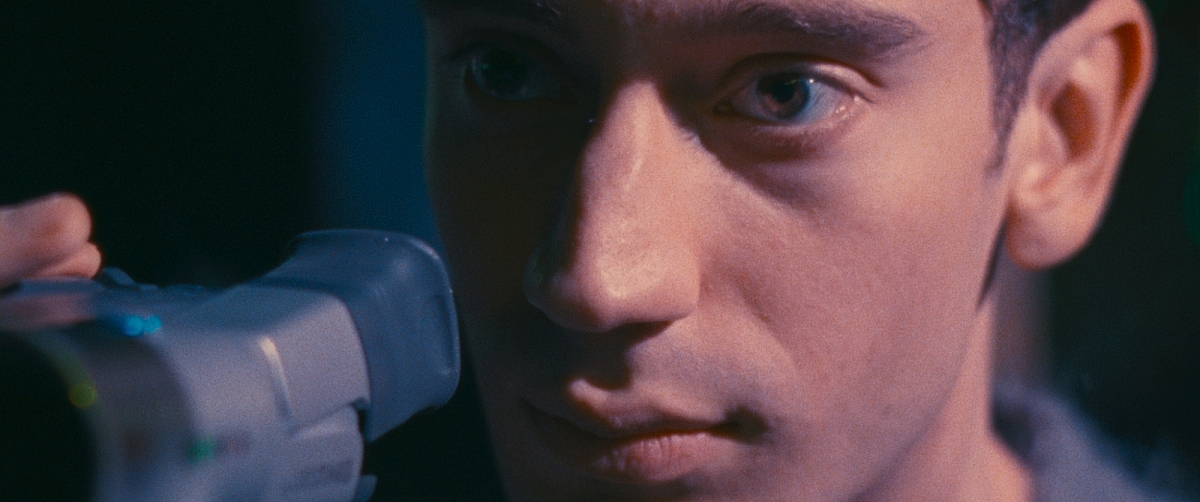
Photo courtesy of MUBI
Shooting digital would've been the obvious choice for Lurker, the psychological thriller about celebrity obsession in the parasocial world of LA hangers-on, from first-time director Alex Russell (the writer and supervising producer of The Bear and Beef). Instead, Russell and cinematographer Pat Scola, ASC (the ASC Spotlight Award winner for Pig) made the aesthetic choice of shooting KODAK 16mm to add analog warmth to this digital world of smart phones and Instagram culture.
In Lurker, boutique clothing store clerk Matthew (Théodore Pellerin, Genesis) worms his way into the inner circle of rising pop singer Oliver (Archie Madekwe, Saltburn) but then fights to stay in and be the primary influencer.
"The first thought was that this was a digital movie, but, to me, that felt a bit redundant," Russell says. "What we really wanted to do was to show how this movie, though modern, is a tale as old as time [about fame] and is evergreen. And why not shoot it in a way that makes it feel classical? That was our theory about 16mm. And when Pat said we could do something different with this digital version of ourselves that we create, it crystallized in the most perfect way."
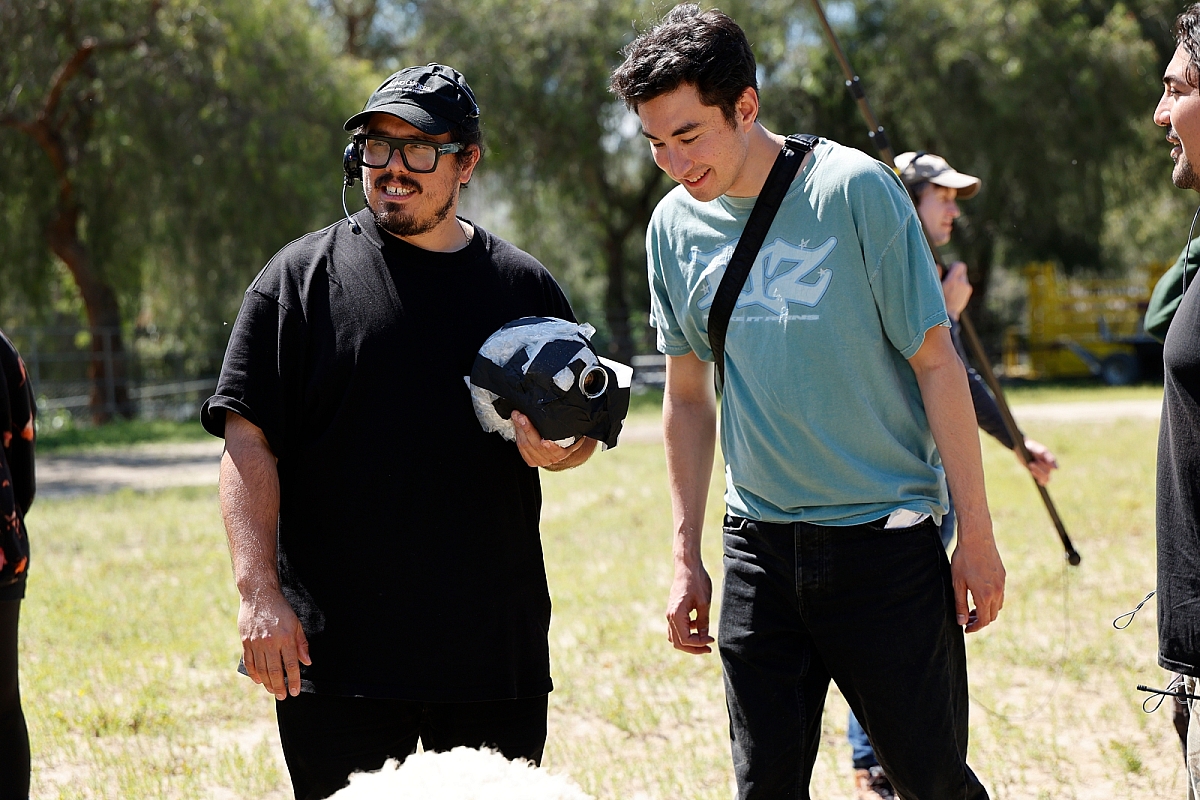
Photo courtesy of MUBI
Scola instantly recognized the default David Fincher digital aesthetic when reading Russell's script but wanted to romanticize the story before going darker in the second half, when Matthew turns the screws on Oliver to rejoin the inner circle and take over.
"There's more to this movie than just the thrilling aspect," says Scola, whose most recent movie, Sing Sing, was also shot in KODAK 16mm. "In the first half, you're not totally sure where it's going to go. But I know my habits on digital. I know the lighting techniques I would lean into, and there's less tools to play with to make digital look interesting to me. And imagine that from the get-go the movie has this sort of dark, brooding aesthetic.
"But what I love about 16," Scola continues, "is that the first part of the movie, when they get to meet and become friends, is that we were able to light in a way that has more life to it, more vibrancy. And film allows me to explore those levels of brightness in a way that isn't just polished and shiny and still has grit to it."
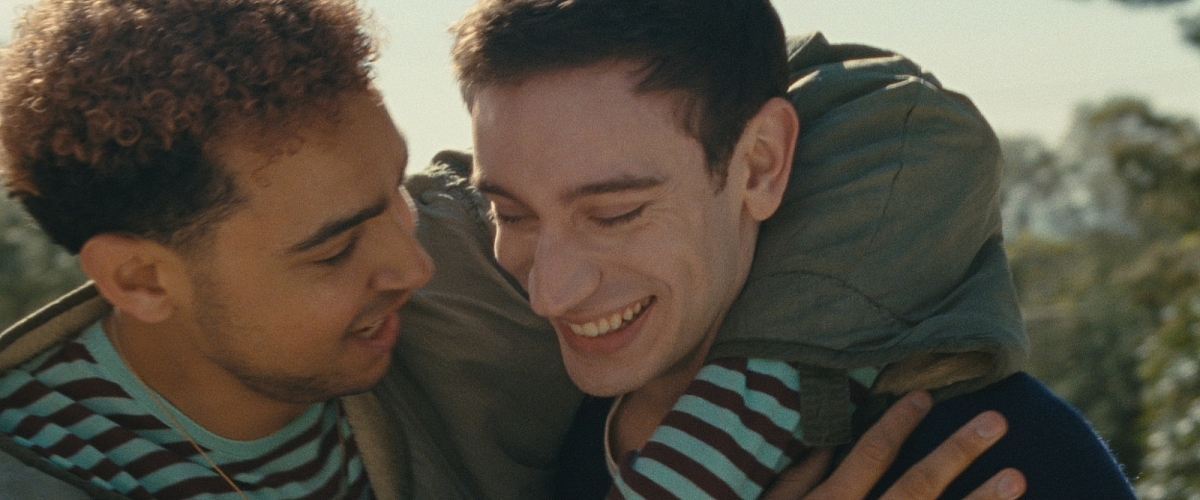
Photo courtesy of MUBI
Scola shot with the Arri 416 and Arri Ultra 16 cameras with Canon 6.6-66 and Canon 10.6-180 lenses. The stocks were KODAK VISION3 500T Color Negative Film 7219 and VISION3 250D Color Negative Film 7207.
The rapport between director and cinematographer was established instantly during their first Zoom meeting. They were both in sync about the movie's ambiguous tone. "It was so important to have a DP that was like a big brother," Russell says. "He has the perfect amount of experience and taste for the project. And it was very clear that there was an overlap in our understanding of what the movie was about."
"It was all in Alex's writing," Scola adds. "And we connected on the subtleties early on that came from Alex's perspective on the music world. I thought the visuals could steer in that direction. I had done lots of music videos with bigger artists who have these followings, these people that exist in their spheres."
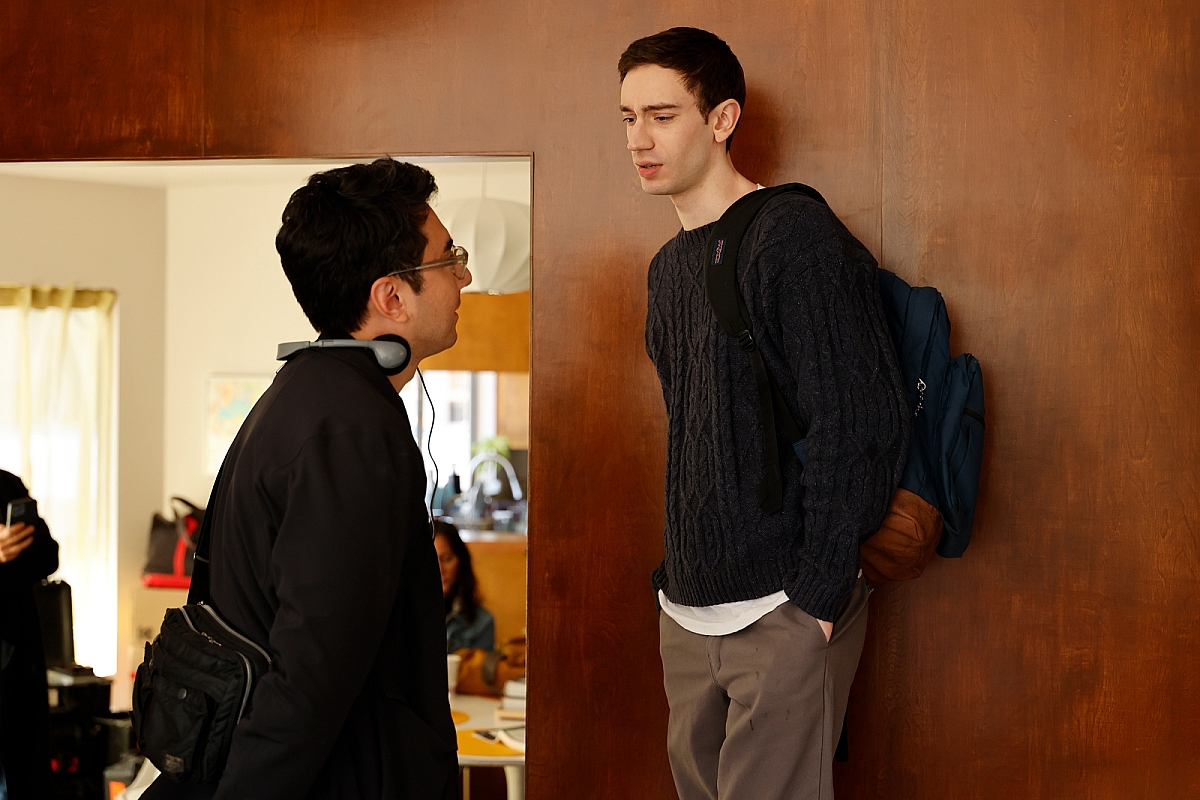
Photo courtesy of MUBI
Early on, it was important to find the right house to shoot in as Oliver's residence. The one they used was actually the first they scouted in Altadena (which subsequently burned down during the Altadena fire in January). It was perfect in its design and layout. What Russell liked was the ability to capture very appealing colors on the faces of his two co-stars when they first interact.
I could see where all the characters would be assembled," says Russell. "It was quite grounded in earth tones and any kind of pops of color came from the spaces that we chose to be in."
Best of all was Oliver's bedroom, which had a see-through circle in the wall. "It was inherent to the space and there was an interesting way of people seeing each other through corners in the different rooms," the director adds. "And there's a shot from Oliver's bedroom through the circle out to the front steps where one kid is getting kicked out of the house. And that's unique to the architecture of the house."
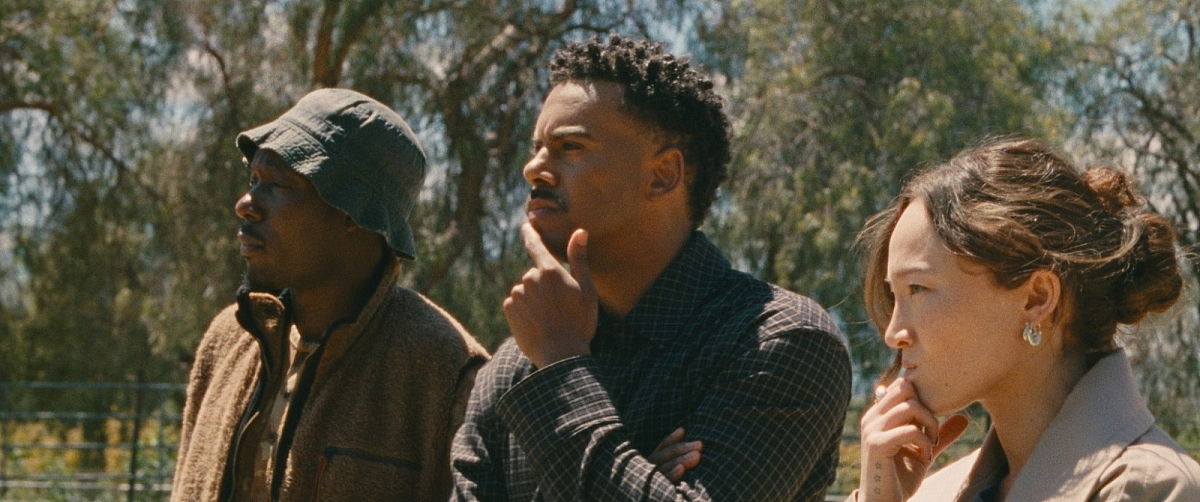
Photo courtesy of MUBI
By contrast, the scene in a field with sheep was visually enhanced by the idea to strap a Sony Hi8 camcorder to one of the them for a video shoot from the animal's POV. The shoot went smoothly, unlike the first day they checked it out it rained, and the sheep were anything but docile.
"All I can remember about that day is trying to wrangle the sheep and attach a camera to it," says Scola. "That was me holding a camera on the sheep a lot of the time. The entire shoot of that day we treated like a music video, for the most part."
"Pat was choreographing the holding of the camera on top of the sheep, and then it had to fall in just the right way, so they covered it all in this cushioning," Russell adds. "So he made this contraption out of the camcorder that when it fell, it wouldn't break. And he'd hold it and then Archie would perform the song."
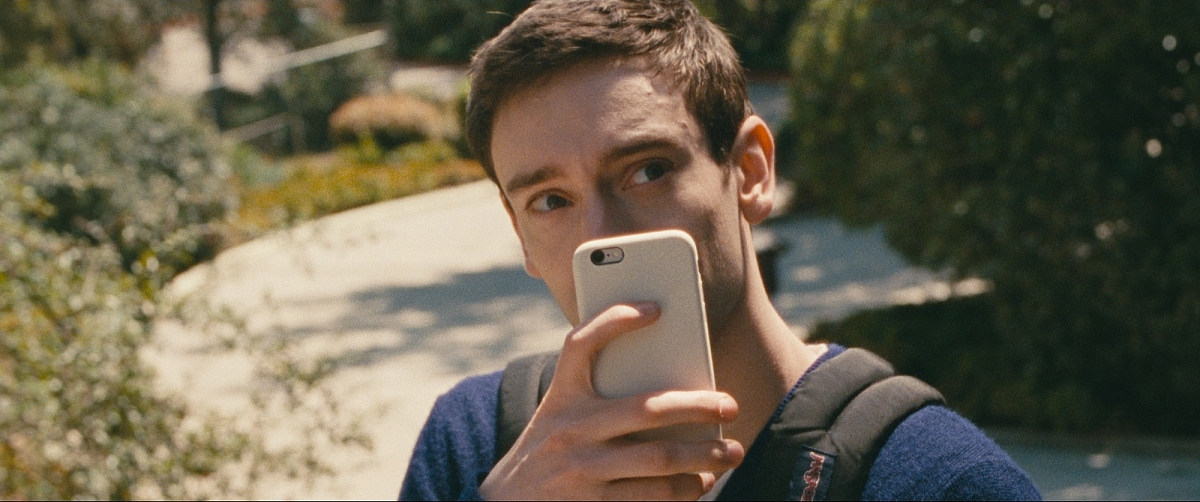
Photo courtesy of MUBI
One of the most visually disturbing scenes occurs when Oliver gets assaulted by paintballs against a white background while painfully singing the song "Love and Obsession."
"Archie was understandably apprehensive about getting shot with paintballs," Russell says. "So he said, 'Ill only do it if you do it first.' So they put me in the outfit and strapped me up and shot me with the paintballs. And then didn't tell me that they were rolling on it. So in the dailies, the next day, there's a beautiful shot of me just railed with paintballs. There was a close-up of my face wincing, and my true fear was coming out. But then after I did it, Archie was super cool about it.
"And it really worked," continues Russell. "To me, it's one of the most beautiful moments in the movie. One of my favorite shots is actually a close-up of him agreeing to do another take. Alex was fine the whole time, and I was always scared because you don't know if it's going to work. There were a few precautions that we took. There was a metal plate fitted to my chest and Archie's chest. And then the paintballs were distressed so that they would explode more easily and required less velocity impact to explode. And we could also shoot at closer range."
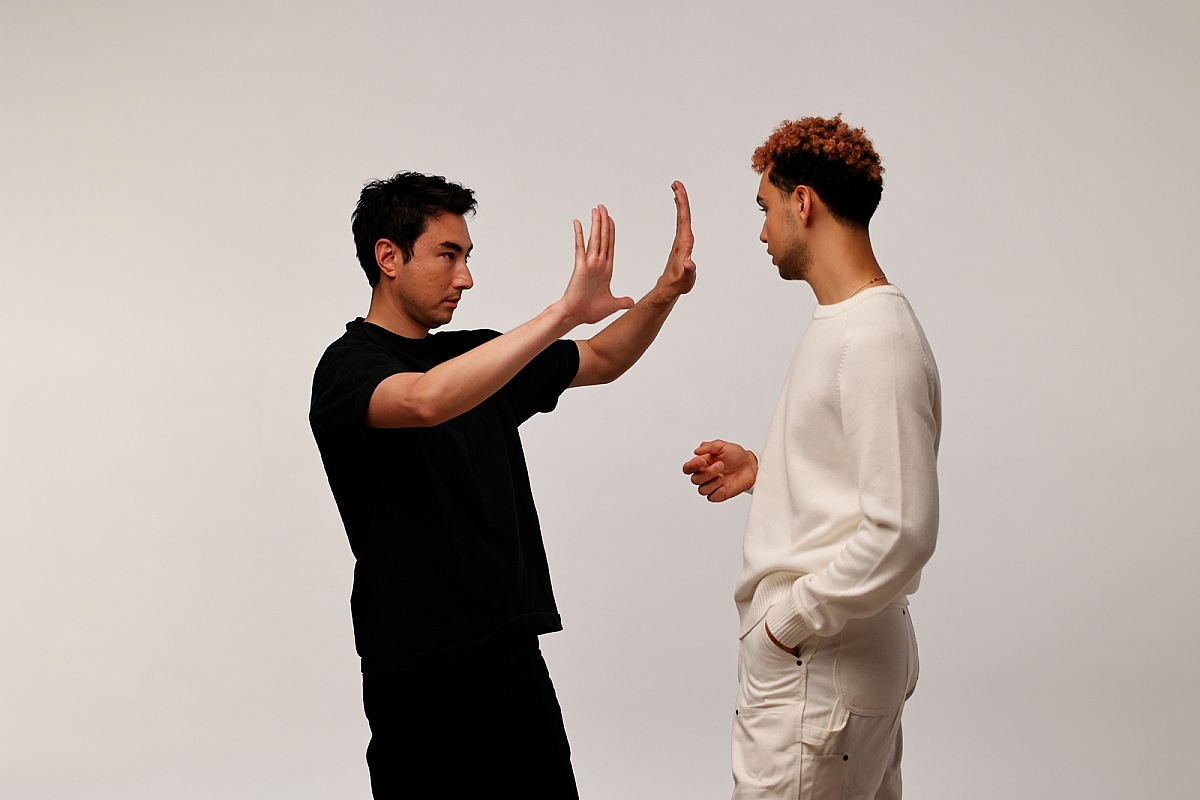
Photo courtesy of MUBI
The confrontation between Matthew and Oliver in a recording studio was shot the last couple of weeks. It wasn't actually scripted, though, but came about later: first as a supplementary scene for auditions, and then as the climactic moment.
"We were firing on all cylinders," says Russell. "It was so late at night, but I was giddy because I knew it was going to be exactly what I was going for. We were figuring out camera things in the moment. We were loving that we could see a faint outline of one actor's reflection through the window separating them. It was an exercise in blocking too. Me and Pat figured out where Matthew starts out beyond the barrier and then, at a certain point, decides to come directly into the room."
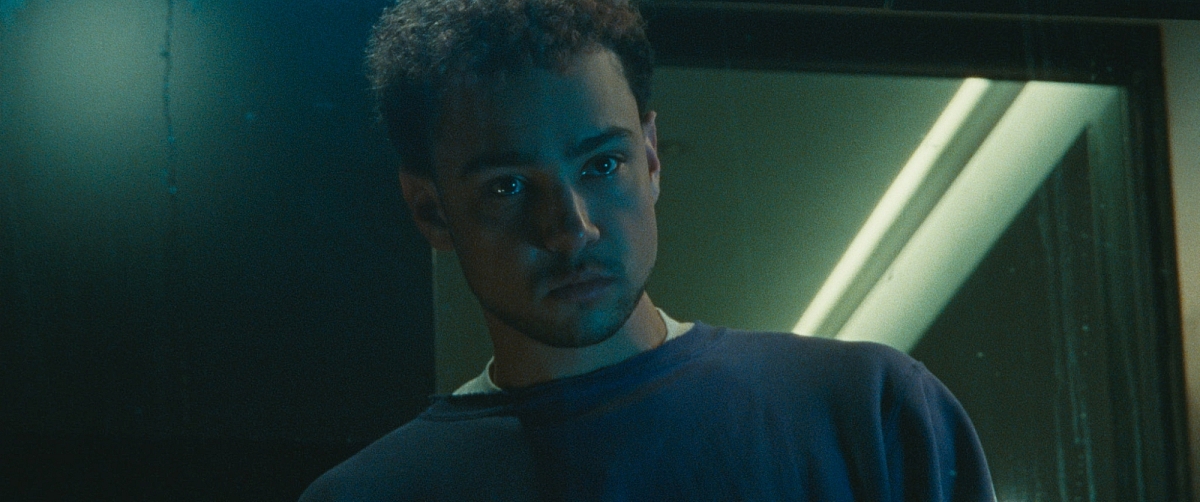
Photo courtesy of MUBI
Scola is particularly proud of the long takes and that they didn't need a lot of pick-ups. "Even though it's cut up," he recalls, "when Matthew goes from inside the studio, when he's sitting in the chair, at the desk, to coming through the door, to getting into Oliver's face, it was all one shot to a certain degree. You could track him the entire way. Each take was an entire roll of film. But each time we'd have to reload. We were just crushing, absolutely smashing film that night. It says something about the level of performance achieved there. They were just living in the moment so much."